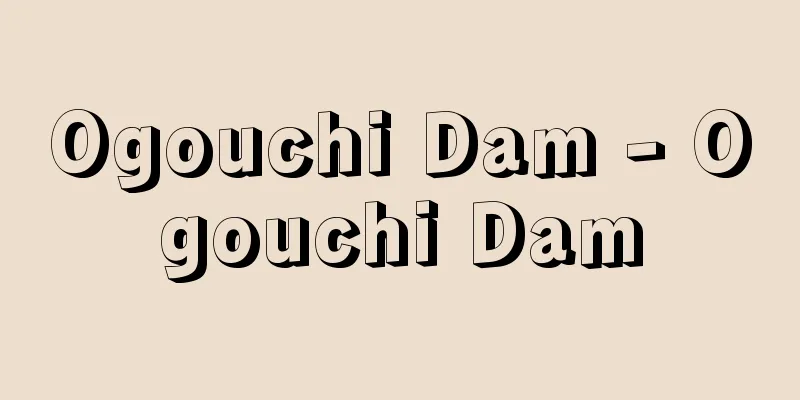Strength - Power

|
When an interaction between substances causes a change in the speed or momentum of the substances, this interaction is called a force. In the microscopic world, a substance particle never has a state in which its position and momentum are fixed at the same time. Therefore, in the microscopic world, it is not possible to consider a change in the momentum of a particle at a certain position. In this sense, force is a physical quantity in the macroscopic world. Interactions between particles occur through various mechanisms. For example, there are interactions between atoms based on quantum effects, and meson-mediated interactions occur between nucleons such as neutrons and protons that make up atomic nuclei. These interactions are sometimes called "exchange forces" and "nuclear forces," respectively, but the meaning of these forces in this case is ambiguous, and the term "interaction" is more accurate. Force is a term that originally came from the sense of muscle strength in work, and was used in various senses before the laws of motion were formulated. It is still sometimes used today to mean energy. "Atomic energy" is one example. [Hajime Tanaka] Unit of force Force is (mass x length)/(time x time) [Hajime Tanaka] Composition and decomposition of forcesWhen two forces of the same direction act simultaneously on a particle as in , the acceleration the particle experiences is the sum of the accelerations the particle experiences when each force acts on it. Force is a physical quantity that has a magnitude and a direction of action, and mathematically it is a vector quantity. The sum of two vectors is given by the new side of a triangle obtained by drawing two vectors in succession, as in (1). Acceleration is a vector quantity, but if we replace the sum of the accelerations mentioned above with a vector sum, we can obtain the acceleration the particle experiences when two forces of different directions act simultaneously, and the single force that gives this acceleration ( (2)). In this way, we can create a triangle of forces and obtain the resultant force of the two forces. Composition of forces can also be seen as the decomposition of forces, as shown in Composition of forces can also be said to show that the individual forces involved in the composition act independently without being hindered by other forces. This is sometimes called the principle of independence of forces. The effect of a force acting on a rigid body is also related to the point at which the force acts. In the case of a rigid body fixed at a single point, the vector product N ( N = r × f ) of the position vector r of the point of application as viewed from the fixed point and the force f gives the change in the rigid body's angular momentum. This is called the moment of force ( ). A force acting on an object from outside it is called an external force, and a force acting between the inside of an object is called an internal force. Internal forces are not related to the movement of the object as a whole. In addition, depending on the type of force and how it acts, there are conservative forces, frictional forces, couple forces, gravitational forces, repulsive forces, centrifugal forces, centripetal forces, inertial forces, etc. [Hajime Tanaka] [Reference] |©Shogakukan "> Two forces and acceleration (Figure A) ©Shogakukan "> Triangle of forces, acceleration and composition of forces (Figure B) ©Shogakukan "> Composition and decomposition of forces (Fig. C) ©Shogakukan "> Moment of force (Fig. D) Source: Shogakukan Encyclopedia Nipponica About Encyclopedia Nipponica Information | Legend |
|
物質間の相互作用が、物質の速度あるいは運動量を変化させる場合、この相互作用を力という。微視的世界では、物質粒子は位置と運動量が同時に定まるような状態をとることはない。したがって、微視的世界では、ある位置における粒子の運動量の変化を考えることはできない。この意味で力は巨視的世界の物理量である。 粒子と粒子との間の相互作用はさまざまな仕組みを通って現れる。たとえば、原子間には量子的効果に基づく原子間相互作用があり、原子核を構成する中性子、陽子などの核子の間には中間子を媒介する相互作用が現れる。これらの相互作用をそれぞれ「交換力」「核力」とよぶことがあるが、この場合の力の意味はあいまいであり、相互作用というほうが近い。 力はもともと仕事の際の筋力感に発した用語であって、運動の法則が定式化される以前にはさまざまな意味に用いられた。現在でもエネルギーという意味で用いることもある。「原子力」はその一例である。 [田中 一] 力の単位力は [田中 一] 力の合成と分解向きが同じ二つの力がのように1個の粒子に同時に作用する場合、粒子が得る加速度は、個々の力が作用したときに粒子が得る加速度の和である。力は大きさとその作用する方向をもつ物理量で、数学的にはベクトル量である。二つのベクトルの和は、の(1)のように二つのベクトルを引き続いて描いて得られる三角形の新しい辺で与えられる。加速度はベクトル量であるが、もし前述の加速度の和をベクトルとしての和に置き換えれば、方向の異なる二つの力が同時に作用したときの粒子の得る加速度およびこの加速度を与える単一の力を求めることができる(の(2))。このようにして力の三角形を作成して、二つの力を合成した合力を得ることができる。力の合成は、その見方をかえれば、が示すように力の分解とみることもできる。また力の合成は、合成にあずかる個々の力が他の力に妨げられず独立に作用することを示すといってもよい。このことを力の独立性の原理とよぶことがある。剛体に力が作用したときの力の効果は、力の作用する点にも関係する。1点に固定された剛体の場合には、固定点からみた作用点の位置ベクトルrと力fとのベクトル積N(N=r×f)が剛体の角運動量の変化を与える。これを力のモーメントとよぶ()。 物体外から物体に働く力を外力といい、物体内部間に働く力を内力という。内力は物体全体の運動には関係しない。そのほか、力の種類や作用の仕方などによって、保存力、摩擦力、偶力、引力、斥力、遠心力、求(向)心力、慣性力などがある。 [田中 一] [参照項目] |©Shogakukan"> 二つの力と加速度〔図A〕 ©Shogakukan"> 力の三角形、加速度と力の合成〔図B〕 ©Shogakukan"> 力の合成と分解〔図C〕 ©Shogakukan"> 力のモーメント〔図D〕 出典 小学館 日本大百科全書(ニッポニカ)日本大百科全書(ニッポニカ)について 情報 | 凡例 |
Recommend
Monocotyledonae; monocots
A plant group that is roughly divided into two gro...
Sanyo Expressway - Sanyo Expressway
This expressway runs from the Hanshin region to t...
Onibuki - Onibuki
... G . chilensis Lam. is a large species native ...
All the plants, trees and land will become Buddhas
A phrase found in the Nirvana Sutra. It means that...
Ministry of Finance Financial Bureau
… [Modern] An administrative agency that is respo...
Codium contractum
… [Reiko Nagata]. … *Some of the terminology that...
Muryoden (English: Wú Liáng Dian)
A type of Chinese architectural structure, the ext...
Yujiro Motoyoshi - Yujiro Motoyoshi
Psychologist. Born in Sanda, Harima Province (Hyo...
Kornai J. (English notation) KornaiJ
… [New Trends] New trends in the socialist econom...
Hard seed
This refers to mature seeds that, even if external...
Purple candytuft
...The seeds are sometimes used to make mustard, ...
Yoshitada Sone
Years of birth: unknown. A poet of the Heian perio...
Migmatite (English spelling)
These rocks were thought to be formed by palingene...
Port Sunlight
...Industrialists soon began to plan new towns th...
On-kana spelling - Jionkana
This shows how to use kana to write the on-the-sp...









